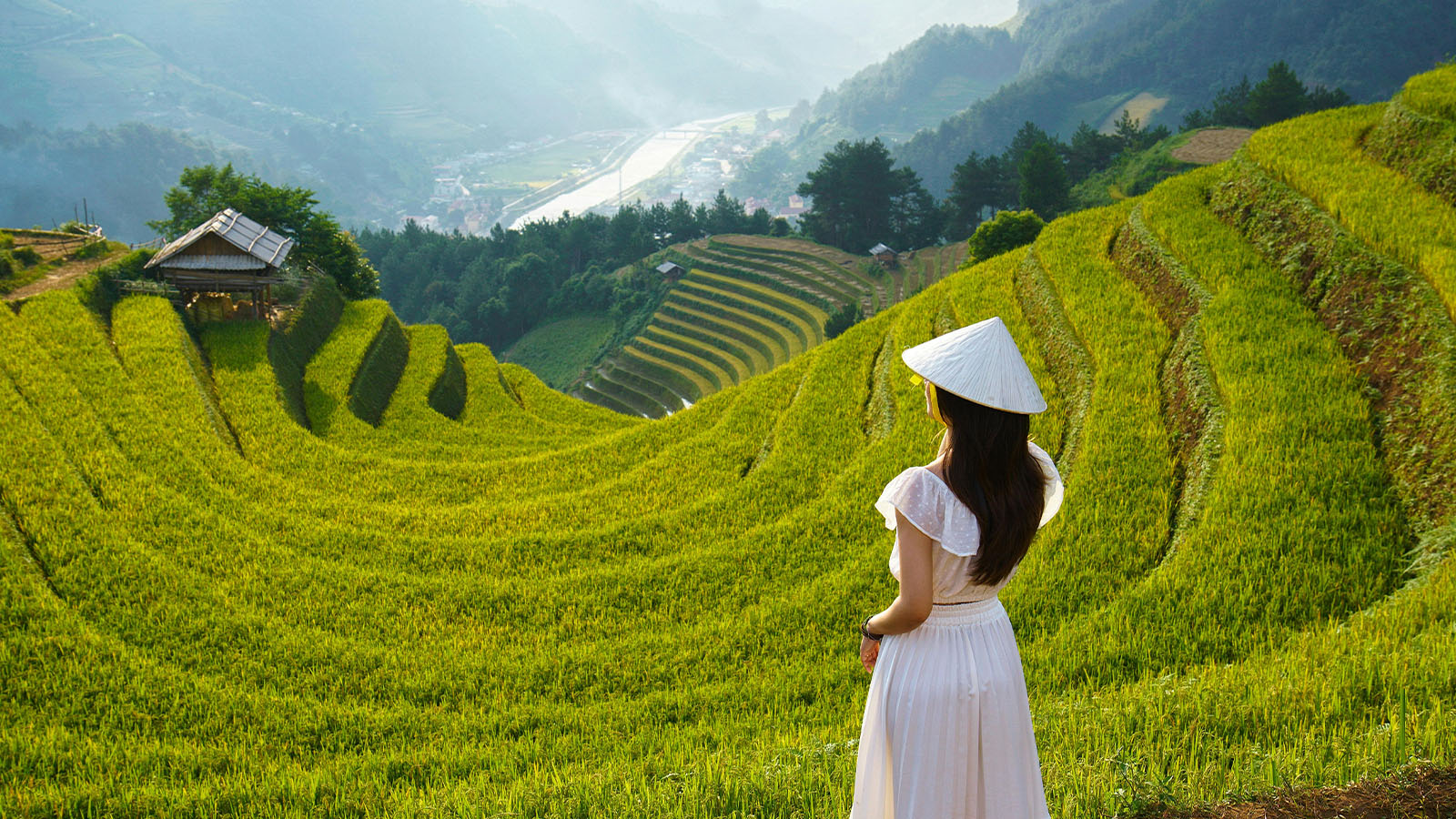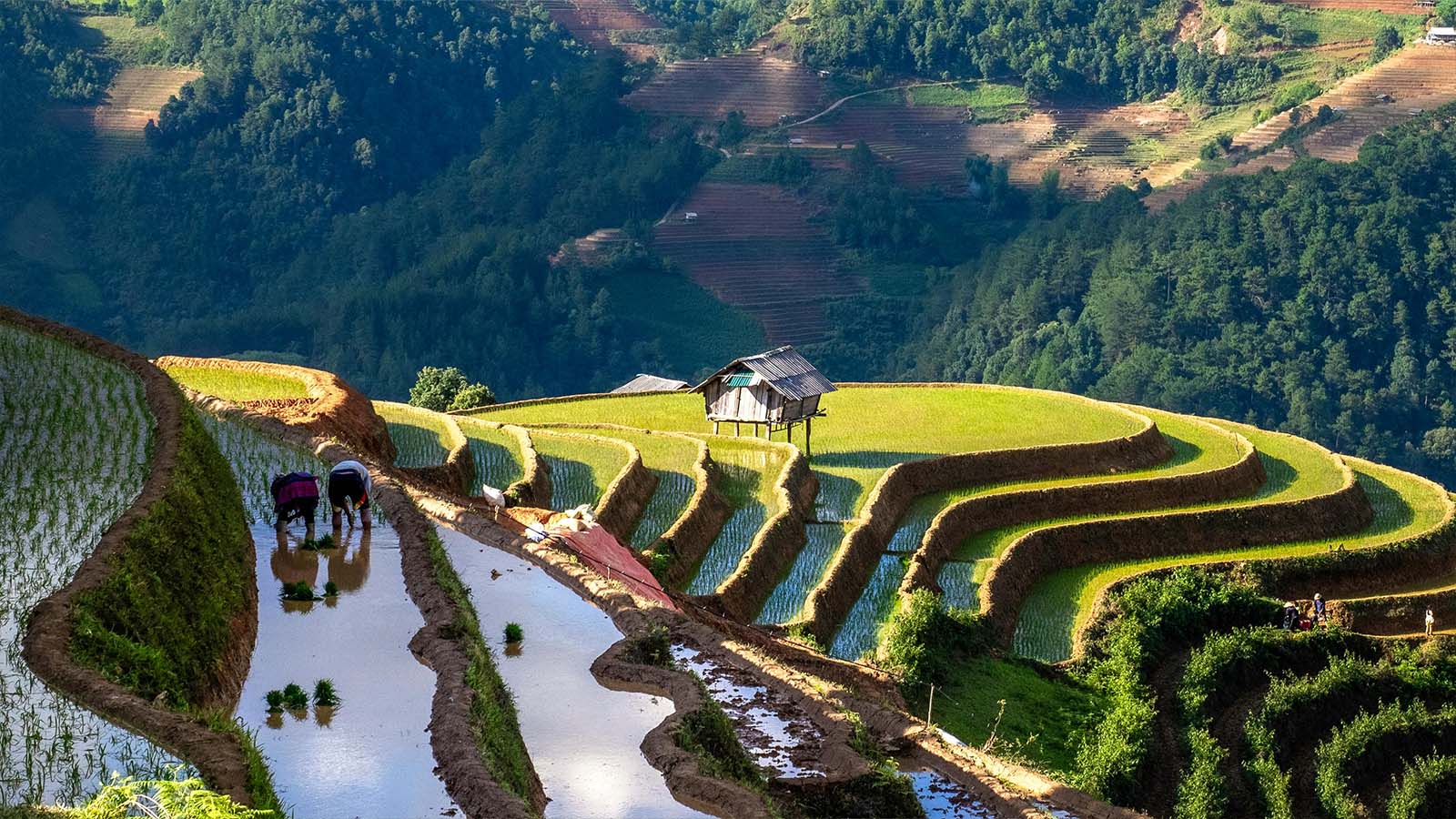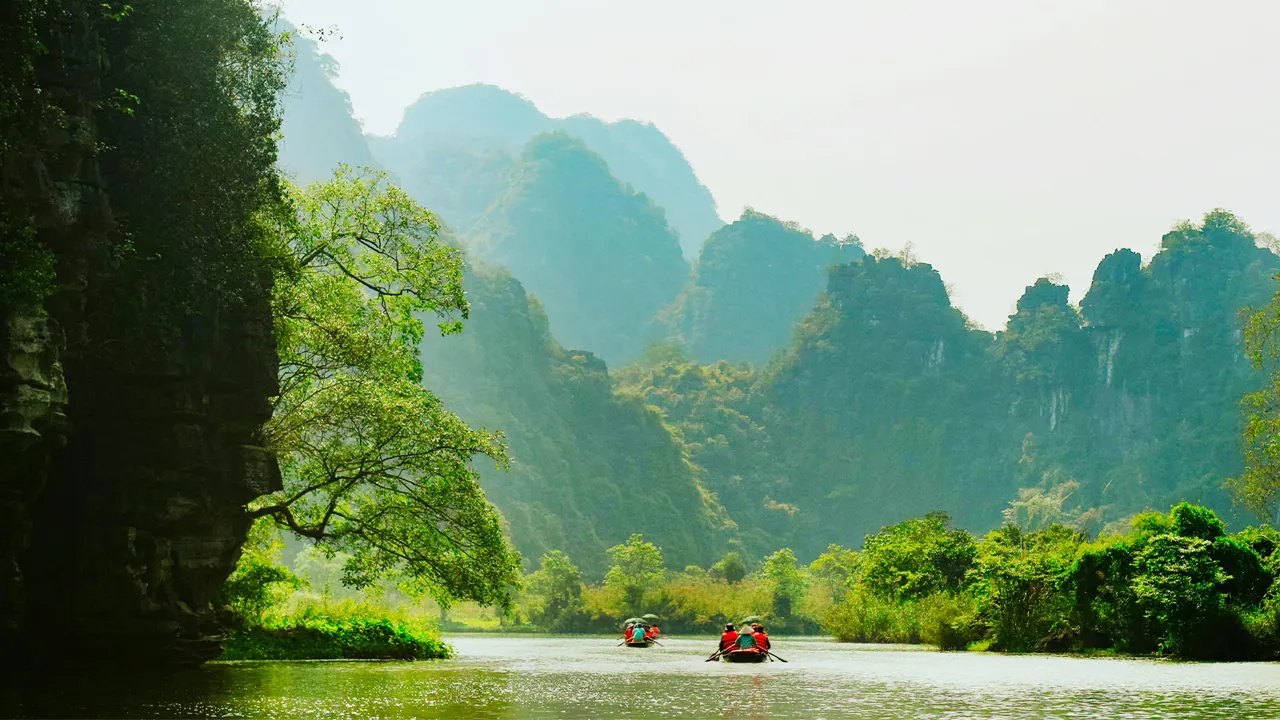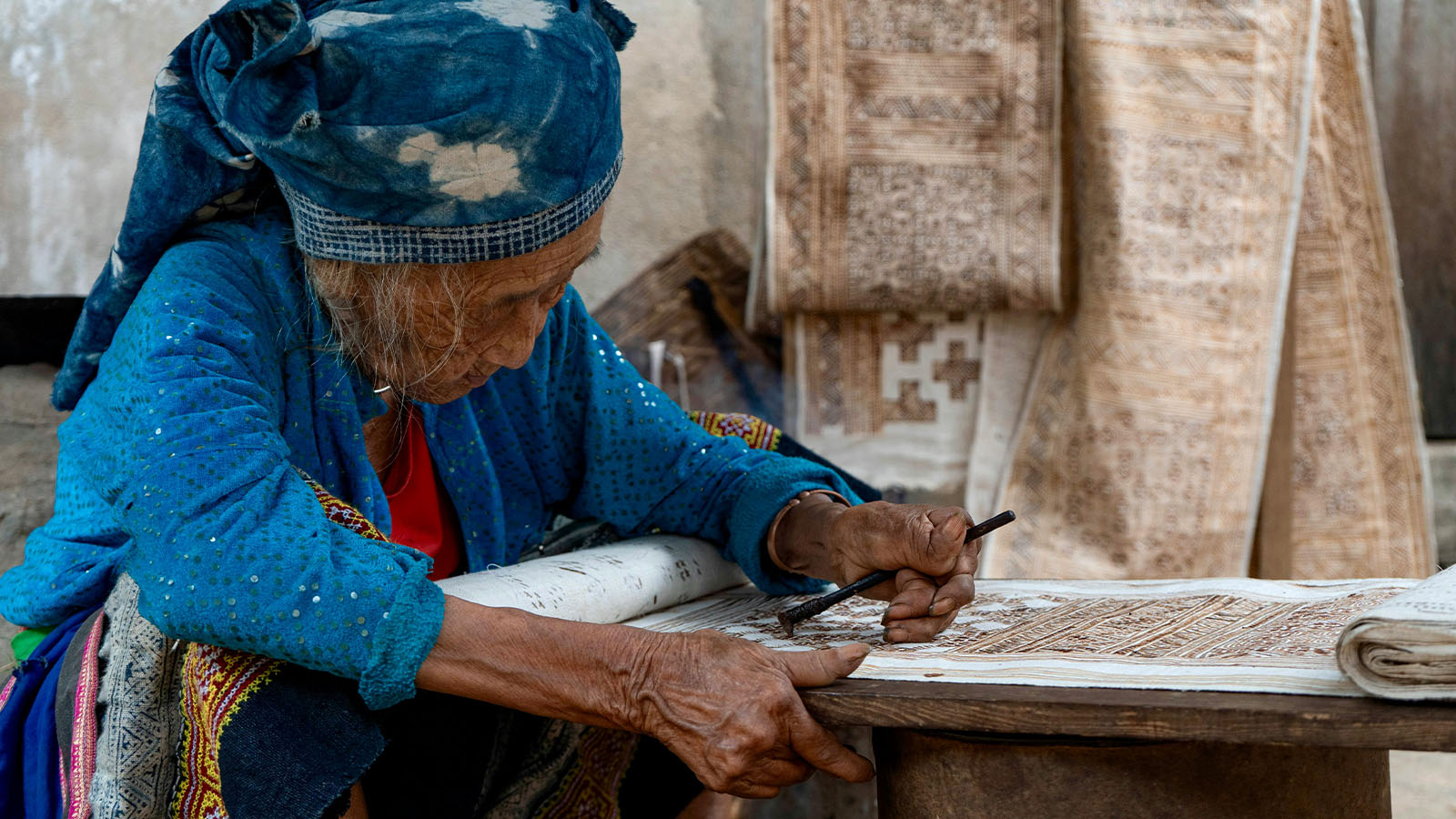Where to Buy Coffee in Vietnam: Best Places, Beans, and Tips
Coffee is part of daily life in Vietnam. You’ll see people drinking coffee at all hours of the day—on plastic stools, in modern cafes, at train stations, or during business meetings. It gives you a reason to sit down, slow down, and enjoy the moment.
Where to buy coffee in Vietnam is a common question for travelers who fall in love with our local brew. The flavors are strong, unique, and unforgettable. That’s why many visitors want to bring some home. In this article, we’ll walk you through what makes Vietnamese coffee special, what types to look for, the best places to buy it, and how to choose the right one for you.
What’s so special about Vietnamese coffee?
What makes it special is the strength, the bold flavor, and the variety of styles. A standard Vietnamese coffee is usually strong, dark, and full of character. Most of the coffee you’ll taste is Robusta, which has more caffeine and bitterness than Arabica. That’s why people often enjoy it with condensed milk or over ice.
We also have traditional brewing methods that shape the flavor. The phin filter is the most common. It’s a small metal drip filter that sits on top of your cup. The water drips through slowly, creating a rich and intense coffee. Some people compare it to espresso, but it’s really its own thing.
Each region of Vietnam also has its own coffee culture. In the north, coffee tends to be thicker and more bitter. In the south, people like it sweet and cold. In central Vietnam, you’ll find cafes serving coffee with salted cream. No matter where you go, you’ll find something unique.
We think what really makes Vietnamese coffee special is its character. It doesn’t try to be like coffee from other countries. It has its own identity. If you love coffee, it’s worth exploring.
Types of coffee you can buy in Vietnam
When you shop for coffee in Vietnam, you’ll see many options. It helps to know what you’re looking at before you buy anything.
Robusta: This is the most common type of coffee in Vietnam. It grows mostly in the Central Highlands like Dak Lak, Gia Lai, and Dak Nong. Robusta has a strong, bold flavor and more caffeine than Arabica. It’s also cheaper. Most street-side coffee and instant brands use Robusta. If you like your coffee strong and bitter, this might suit you.
Arabica: Arabica grows in higher elevations like Da Lat, Son La, and Dien Bien. It’s harder to grow, so it costs more. Arabica has a softer, more complex flavor. You may taste hints of fruit or nuts depending on how it’s roasted and processed. If you want something more refined, go for Arabica.
Specialty Varieties: Some farms and roasters offer peaberry (a natural mutation with a single round bean) or rare beans from small farms. These are usually more expensive and marketed toward coffee enthusiasts. You may also hear about “weasel coffee” (from civet cats). It’s controversial, and we suggest you research the source carefully before buying.
Forms You Can Buy
Whole beans: Best if you have a grinder at home. They stay fresh longer.
Ground coffee: More convenient, but it loses flavor faster. Check the grind size—Vietnamese coffee often uses a coarse grind for phin filters.
Instant coffee: Very popular in Vietnam. G7 is a famous brand. It’s sweet, strong, and easy to pack. Good for souvenirs or travel.
Drip bags: These are single-serving coffee bags that you hang over your cup and pour hot water through. They’re good if you don’t want to carry a phin filter.
Where to buy coffee in Vietnam
You can find coffee almost everywhere in Vietnam, but not all places offer the same quality. Some are good for souvenirs, while others are better for fresh, high-quality beans.
Local Markets and Supermarkets
You’ll see big supermarket chains like WinMart, Co.opmart, and Big C in most cities. These stores usually sell popular brands like Trung Nguyên, G7, and Vinacafe. You can find both ground coffee and instant packets here. They are affordable and convenient, but they focus more on mass-market products than on quality.
Our tip: Supermarkets are fine for quick buys or gifts, but they’re not the best place for serious coffee lovers.
Coffee Shops and Roasteries
If you want freshly roasted coffee, go to a specialty coffee shop or roastery. These places often work with farmers from specific regions and roast the beans in-house. They can tell you about the origin, processing method, and roast level. You can even taste the coffee before buying.
Most of these shops sell both whole beans and ground coffee. Some offer drip bags or phin filters as well. Prices are higher than in supermarkets, but the quality is much better.
Look for shops like
-
The Berryfield, Acid8, or Untitled Espresso Bar in Hanoi
-
La Viet, The Married Beans, and K’Ho in Da Lat
-
The Workshop, Bosgaurus, and Every Half in Ho Chi Minh City
Our advice: Talk to the staff. Ask what they recommend based on how you brew at home. They usually know their stuff and love to share.
Online Stores in Vietnam
Many Vietnamese coffee roasters now sell online. If you're staying in the country for a while or want to send coffee as a gift, this can be very useful. Some websites have English support and nationwide delivery.
Popular online options include:
-
43 Factory Coffee Roaster or XLIII Coffee (Da Nang, Hoi An, and HCMC)
-
Nguyen Coffee Supply (also ships abroad)
You can often choose grind size, roast level, and delivery options. Just be sure to check the roast date before you order.
Our tip: If you don’t have time to visit a shop, order online from a roaster with clear product details and recent roast dates.
Coffee Farms and Plantations
You can visit coffee farms in Da Lat, Son La, Dien Bien, and Buon Ma Thuot. Some of them offer tours, tasting sessions, and workshops. You’ll learn about the growing process, harvesting, and processing. It’s a great experience.
However, you can’t usually buy coffee directly from the farms. Farmers sell their beans to roasters, who then handle the roasting and packaging. So while you may drink coffee at the farm, you’ll need to find a local shop or roaster to actually buy it.
Our opinion: You should still go. Visiting a farm helps you understand the hard work behind each cup. It also supports local communities.
Best Cities to Buy Coffee in Vietnam
Some cities in Vietnam are better for buying coffee than others. These places either produce coffee or have a strong coffee culture with many good roasters and shops.
Da Lat
Da Lat is one of the best places for Arabica in Vietnam. It has the right altitude, climate, and soil. Many small farms and specialty roasters are based here. You can buy freshly roasted beans, try rare varieties, and even visit plantations nearby. Shops like La Viet and K’Ho Coffee sell high-quality beans and also offer tastings.
Our tip: Da Lat is a great place to explore both nature and coffee.
Hanoi
Hanoi has a long coffee tradition. People drink strong black coffee or egg coffee in small, busy cafes. While the city doesn’t produce coffee, you’ll find many good roasters here. Look for shops like Kafeville, The Berryfield, Acid8, or Untitled Espresso Bar. Some work directly with farmers and roast in small batches.
Our tip: Taste first, then buy. Cafes here often let you try before choosing a bag to bring home.
Ho Chi Minh City
This is where modern coffee culture meets Vietnamese tradition. Many local and international roasters are based here. You’ll find everything—from classic drip coffee to pour-overs and espresso made with beans from Da Lat or Dak Lak. Shops like The Workshop, Lacàph, and Bosgaurus focus on quality and variety.
Our tip: If you want more variety, Ho Chi Minh City gives you the most options in one place.
What to look for when buying coffee in Vietnam
When you shop for coffee in Vietnam, don’t just go by the label or price. Here are some things you should pay attention to:
Roast Date: Always check the roast date. Freshly roasted beans (within 2–4 weeks) will taste better. Some shops roast weekly and label their bags clearly. Avoid buying coffee with no date or one that’s too old; it loses its flavor.
Bean Type and Origin: Know what you’re buying. Robusta is stronger and cheaper. Arabica is smoother and more expensive. Some bags will also mention the region—like Da Lat, Khe Sanh, or Son La. These details matter if you want to understand the flavor and support good producers.
Grind Size: Buy whole beans if you have a grinder. If not, ask for the right grind size. Phin filters need a medium-coarse grind. Drip machines, espresso makers, and French presses each need something different. The shop staff can help with this.
Packaging: Good coffee usually comes in sealed bags with a one-way valve. This keeps the beans fresh and allows carbon dioxide to escape. Avoid bags that are open, poorly sealed, or packed in thin plastic with no information.
Fake or Flavored Coffee: Some cheap coffees in markets are not 100% pure. They may contain corn, soybeans, or artificial flavors. These are often dark, oily, and overly strong. If the price is too low and the smell too sweet, be careful.
FAQs about buying coffee in Vietnam
Is coffee cheap in Vietnam?
Yes, coffee is generally cheap in Vietnam—especially local Robusta. You can get a cup of cà phê sữa đá (iced milk coffee) for 20,000–30,000 VND (under $1.50 USD) at street cafes. When it comes to beans, supermarket brands are very affordable, starting at around 70,000 VND ($3) for 250g.
But specialty Arabica from Da Lat, Son La, or Dien Bien costs more. A bag from a good roaster might be 200,000–300,000 VND ($8–12) for 250g. That’s still cheaper than in many Western countries.
Which Vietnamese coffee should you buy?
If you like strong, bold coffee with chocolate and nutty notes, try Robusta from Dak Lak or Gia Lai. It works well with sweetened condensed milk and tastes great in phin filters.
If you prefer something lighter and smoother, go for Arabica from Da Lat, Son La, or Quang Tri. These often have fruity or floral notes and suit pour-over or espresso methods.
Some roasters also sell catuai, typica, or catimor—these are Arabica varieties. You can try single-origin bags to explore the differences.
How to enjoy Vietnamese coffee?
There are many ways to enjoy coffee in Vietnam. Here are a few common ones:
Phin coffee (drip filter): Slow, strong, and usually served with condensed milk. You’ll need a metal phin filter, which you can buy for under $5. Great for Robusta.
Iced black coffee (cà phê đá): Just strong black coffee over ice. Simple and refreshing.
Egg coffee (cà phê trứng): A Hanoi specialty. Hot black coffee topped with whipped egg yolk and sugar. Tastes like dessert.
Pour-over or espresso: Many new cafes and roasters now use these methods for Arabica beans. These let you taste the subtler flavors.
How to keep Vietnamese coffee fresh after buying?
Freshness matters. Once coffee is roasted, it starts losing flavor. Here’s how you can keep it fresh:
Keep it sealed: Use an airtight bag or container with a one-way valve if possible.
Avoid heat and sunlight: Store the coffee in a cool, dry place—away from the stove or windows.
Don’t refrigerate: Coffee can absorb smells from other food. A cupboard is better.
Buy in small batches: It’s better to buy 250g at a time than a full kilo unless you drink a lot daily.
Conclusion
We hope this guide helped you understand where to buy coffee in Vietnam and how to choose something you’ll actually enjoy. There’s a lot of coffee here, but not all of it is the same. With the right information, you can find something delicious and worth sharing. If you want to go deeper, visit a plantation, or taste coffee straight from the farm to the cup, we can help. Book a coffee tour with us and discover the real story behind your next favorite brew.
>>> What are the best things to do in the Central Highlands of Vietnam
>>> Da Lat—A Perfect Destination For Your Honeymoon In Vietnam
Send us your comments about : Where to Buy Coffee in Vietnam: Best Places, Beans, and Tips
Required fields *
You might also be interested
Our clients’ favorite journeys to customize
Looking for inspiration? Discover some of our most popular tours in Vietnam, highly appreciated by our travelers. They are a great starting point to help you choose the perfect journey through Vietnam, Laos, Cambodia, Myanmar, or Thailand—whether you’re traveling solo, as a couple, with family, or with friends.
And since this is your trip, feel free to customize it just the way you like!
Vietnam Cambodia Itinerary 14 Days
Hanoi – Hoa Binh – Mai Chau – Ninh Binh – Halong bay – Hue - Danang – Hoian – Saigon – Ben Tre - Can Tho – Saigon - Siem Reap Angkor - Tonlé Sap - Siem Reap – Ta Prohm - Departure
Vietnam 14 Day Itinerary
Vietnam 14-day itinerary covers the country’s top highlights and quintessential experiences for an unforgettable journey.
Honeymoon Tour Pakcages In Vietnam 12 Days
Saigon Arrival - City Tour – Mekong Delta – Danang – Hoian - by flight - Da Nang – Hanoi - by flight – Halong - overnight on junk – Departure
Authentic Hoang Su Phi Trekking Tours
Hoang Su Phi trekking tours take you to stunning terraces, meet few tourists, connect with locals and enjoy authentic culture.
Best Nha Trang Beach Tour 4 Days
Saigon/Hanoi – Nha Trang relaxation – Saigon/Hanoi – Departure
Mekong Delta Bike Tour Itinerary 7 Days
Cycle through the Mekong Delta in 7 days, discovering floating markets, orchards, craft villages, and tranquil green islands.
Are you interested in this tour?




































Comment